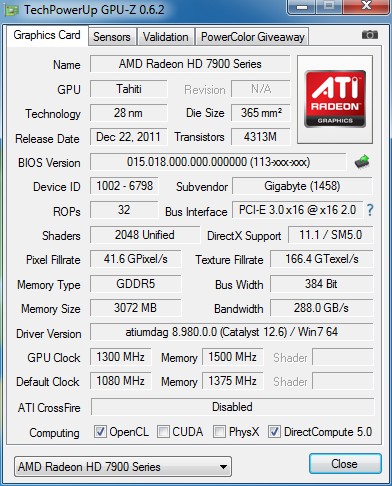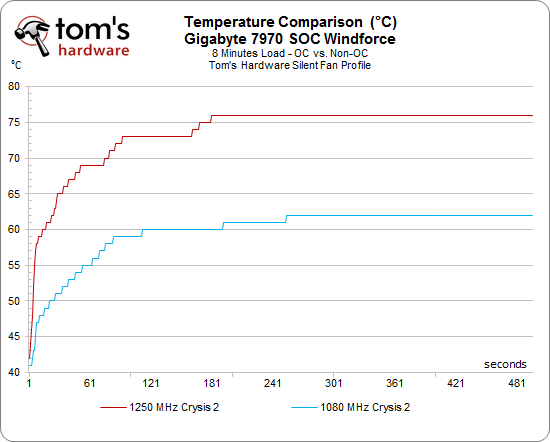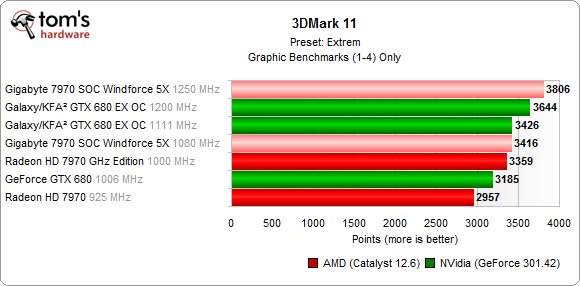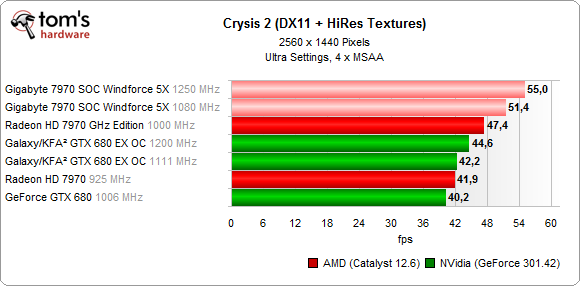Gigabyte Radeon HD 7970 Super Overclock: Now With Windforce 5X
Gigabyte’s Radeon HD 7970 Super Overclock is huge, heavy, overclocked, and very different-looking. Its Windforce 5X cooler employs five 40 mm fans. We benchmark the card, spend some time tweaking it, and measure the noise those blowers make.
Overclocking And Performance
We wanted to figure out just how far the Radeon HD 7970 Super Overclock's Windforce 5X cooling solution would let us overclock AMD's Tahiti GPU.
Our GPU achieves an ASIC score of 66.7 in GPU-Z, which isn't very good. But we managed to overclock it well anyway. Using 1.25 V, we managed to hit 1250 MHz. At 1.3 V, that number increased to 1300 MHz. Both values are stable for long-term gaming and under our stress tests. The memory was stable up to about 1500 MHz. We started running into problems (including lock-ups) at 1550 MHz.
If you push your GPU to 1.3 V, then you really want to retain the card's default fan speed profile. Our custom configuration resulted in temperatures as high as 90 degrees Celsius. We discovered that our noise-optimized profile does work well at 1.25 V or less, though.
Performance Benchmarks
We’ve already spent plenty of time benchmarking AMD's Tahiti GPU, so we didn't need to run many tests to know where Gigabyte's Super Overclock card places. Really, it's only necessary to see where the stock 1080 MHz clock rate lands, along with the overclocked frequency of 1250 MHz.
Once you exceed about 1100 MHz, overclocking yields diminishing returns. Performance continues to increase at higher clock rates, but the ratio between faster frame rates and power consumption drops, negating the reason to push any higher.
It makes sense that Gigabyte's Radeon HD 7970 Super Overclock has a stock GPU clock of 1080 MHz. The one reason to push up to 1250 or 1300 MHz is benchmark bragging rights. But the speed-up won't make much difference in real-world gaming.
Get Tom's Hardware's best news and in-depth reviews, straight to your inbox.
Current page: Overclocking And Performance
Prev Page Power Consumption And Gaming Performance Next Page Operation In A Closed Case
Igor Wallossek wrote a wide variety of hardware articles for Tom's Hardware, with a strong focus on technical analysis and in-depth reviews. His contributions have spanned a broad spectrum of PC components, including GPUs, CPUs, workstations, and PC builds. His insightful articles provide readers with detailed knowledge to make informed decisions in the ever-evolving tech landscape



